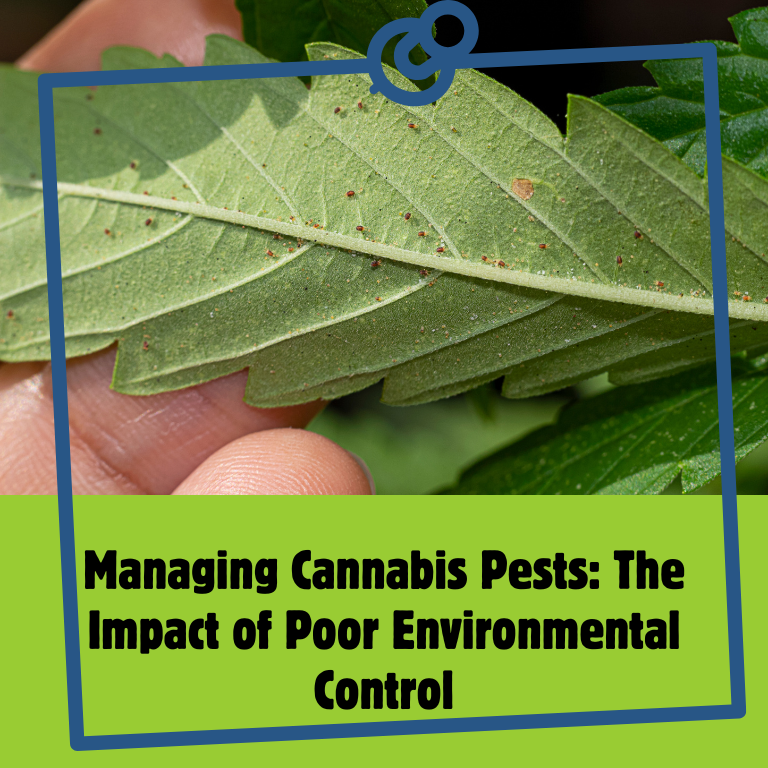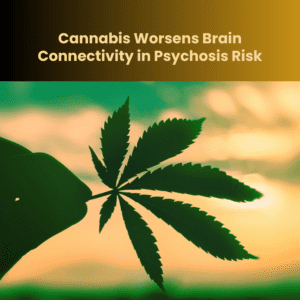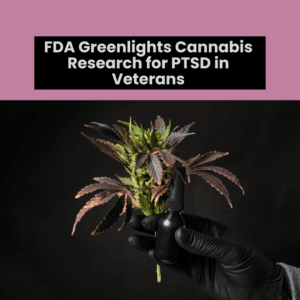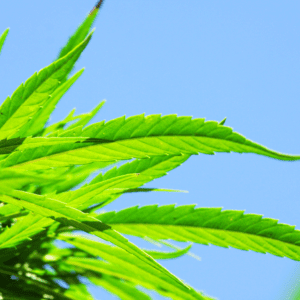Managing Cannabis Pests: The Impact of Poor Environmental Control

Introduction to Cannabis Pest Management
Managing pests in cannabis cultivation is crucial for ensuring healthy, high-yielding plants. Effective pest management strategies prevent infestations that can damage crops and reduce productivity. This article explores the impact of poor environmental control on pest infestations and outlines best practices for maintaining a pest-free growing environment.
Understanding Cannabis Pests
Cannabis pests are insects and mites that feed on cannabis plants, causing physical damage and transmitting diseases. Common pests include aphids, spider mites, whiteflies, thrips, and fungus gnats. Understanding these pests and their impact on plants is the first step in effective pest management.
The Role of Environmental Control in Pest Management
Environmental control plays a vital role in pest management. By maintaining optimal conditions for cannabis plants, growers can create an environment that is less conducive to pest infestations. Key factors to control include temperature, humidity, airflow, light, and watering practices.
Common Cannabis Pests and Their Effects
Aphids
Aphids are small, sap-sucking insects that can cause stunted growth and yellowing leaves. They also excrete honeydew, which can lead to mold growth.
Spider Mites
Spider mites are tiny arachnids that feed on plant sap, causing speckled leaves and webbing. Severe infestations can lead to leaf drop and reduced plant vigor.
Whiteflies
Whiteflies are small, winged insects that feed on the underside of leaves. They can cause yellowing, wilting, and reduced growth.
Thrips
Thrips are slender insects that scrape and feed on plant tissues, causing silvering and distortion of leaves.
Fungus Gnats
Fungus gnats are small flies whose larvae feed on plant roots, leading to poor plant health and increased susceptibility to other pests and diseases.
Symptoms of Pest Infestation in Cannabis Plants
Identifying signs of pest infestation early is crucial for effective management. Common symptoms include yellowing leaves, distorted growth, speckled or mottled foliage, visible insects, and webbing. Regular inspections help detect pests before they cause significant damage.
How Poor Environmental Control Leads to Pest Infestations?
Factors Contributing to Infestations
Poor environmental control creates conditions that favor pest infestations. High humidity, stagnant air, and improper light cycles can stress plants, making them more vulnerable to pests. For example, overly humid conditions can promote mold and mildew, which attract fungus gnats.
Examples
In an indoor grow room with poor ventilation, high humidity can lead to a spider mite outbreak. Similarly, overwatering can create a perfect breeding ground for fungus gnats.
Temperature and Humidity Management
Optimal Ranges
Maintaining optimal temperature and humidity ranges is crucial for preventing pest infestations. Cannabis plants thrive in temperatures between 70-85°F (20-30°C) and humidity levels between 40-70%, depending on the growth stage.
Impact on Pest Populations
High temperatures and humidity levels can accelerate pest reproduction, while proper environmental control can slow down pest life cycles and reduce their populations.
Airflow and Ventilation
Good airflow prevents stagnant conditions that favor pests. It also helps maintain consistent temperature and humidity levels throughout the grow area.
Preventing Stagnant Conditions
Using oscillating fans, exhaust fans, and proper ventilation systems ensures that air circulates effectively, reducing the risk of pest infestations.
Light and Photoperiod Management
Role of Light in Plant Health: Proper light management supports healthy plant growth and resilience against pests. Adequate light intensity and photoperiods help maintain plant vigor.
Impact on Pests
Some pests, such as spider mites, thrive in high light conditions. Managing light exposure can help control pest populations and prevent outbreaks.
Watering Practices and Their Impact on Pest Control
Overwatering creates a moist environment that attracts pests like fungus gnats. It also promotes root rot and weakens plants, making them more susceptible to infestations.
Underwatering
Underwatering stresses plants and makes them less resilient to pests. Maintaining proper watering practices is essential for healthy plants and pest prevention.
Drainage Considerations
Ensuring good drainage prevents waterlogging and reduces the risk of pest infestations. Properly designed grow beds and containers with adequate drainage are crucial.
Soil and Growing Medium Management
Importance of Soil Health: Healthy soil supports robust plant growth and resilience against pests. Using high-quality, sterilized soil and growing media can prevent soil-borne pests.
Preventing Soil-Borne Pests
Regularly inspecting and maintaining soil health through practices such as crop rotation, soil amendments, and the use of beneficial microorganisms helps prevent soil-borne pest infestations.
Implementing Integrated Pest Management (IPM)
Integrated Pest Management (IPM) is a holistic approach that combines biological, cultural, physical, and chemical controls to manage pests effectively.
Steps to Implement
Implementing IPM involves monitoring pest populations, using preventive cultural practices, introducing biological controls, and applying chemical controls as a last resort. Regular assessment and adjustment of strategies are essential for success.
Biological Controls for Cannabis Pests
Beneficial Insects
Introducing beneficial insects, such as ladybugs, predatory mites, and parasitic wasps, can help control pest populations naturally.
Natural Predators
Using natural predators, such as nematodes and predatory beetles, targets specific pests and reduces their numbers without harming plants.
Chemical Controls and Their Use in Cannabis Cultivation
Safe Pesticides
When chemical controls are necessary, using safe, organic pesticides minimizes harm to plants and the environment. Neem oil, insecticidal soap, and pyrethrin are common choices.
Application Methods
Proper application methods ensure the effectiveness of chemical controls while minimizing risks. Following manufacturer instructions and using protective equipment is essential.
Cultural Practices to Prevent Pests
Crop Rotation
Rotating crops prevents pest buildup in the soil and disrupts pest life cycles.
Sanitation
Maintaining a clean grow environment, including regular cleaning of tools and equipment, prevents pest introductions and spread.
Companion Planting
Planting pest-repellent plants, such as marigolds and basil, alongside cannabis can deter pests and promote a healthy growing environment.
Monitoring and Early Detection
Tools and Techniques
Using tools such as sticky traps, magnifying glasses, and digital monitoring systems helps detect pests early.
Regular Inspections
Conducting regular inspections of plants, including leaves, stems, and soil, ensures early detection and prompt intervention.
Training Staff on Pest Management
Importance of Training
Training staff on pest management ensures they understand the importance of maintaining optimal conditions and are equipped to handle infestations.
Effective Methods
Effective training methods include hands-on training, regular workshops, and providing detailed manuals and resources. Ensuring staff are knowledgeable and skilled in pest management contributes to successful cultivation.
Regulatory Considerations for Pest Management in Cannabis
Compliance with Regulations
Compliance with local regulations regarding pest management is crucial for legal cannabis cultivation. Understanding and adhering to these regulations ensures safe and lawful operations.
Industry Standards
Following industry standards for pest management helps maintain product quality and consumer safety. Staying informed about best practices and regulatory changes is essential for success.
Cost-Effectiveness of Proper Environmental Control
Balancing Cost and Benefits
Investing in proper environmental control can be cost-effective in the long run. While there are initial costs for equipment and systems, the benefits of higher yields and better-quality cannabis outweigh these expenses.
Long-Term Savings
Proper environmental control leads to healthier plants, fewer crop losses, and higher yields, resulting in long-term savings and increased profitability.
Future Trends in Pest Management and Environmental Control
Emerging Technologies
Emerging technologies such as advanced sensors, automated control systems, and AI-driven monitoring tools are revolutionizing pest management and environmental control.
Sustainable Practices
Sustainable practices, including eco-friendly pest management and energy-efficient environmental controls, are becoming increasingly important in cannabis cultivation.
Managing cannabis pests effectively requires a comprehensive approach that includes proper environmental control, integrated pest management, and good cultural practices. By maintaining optimal conditions for cannabis plants and implementing preventive measures, cultivators can reduce the risk of pest infestations and ensure healthy, high-yielding crops. Investing in staff training, staying compliant with regulations, and adopting emerging technologies will further enhance pest management strategies and contribute to sustainable and successful cannabis cultivation.











